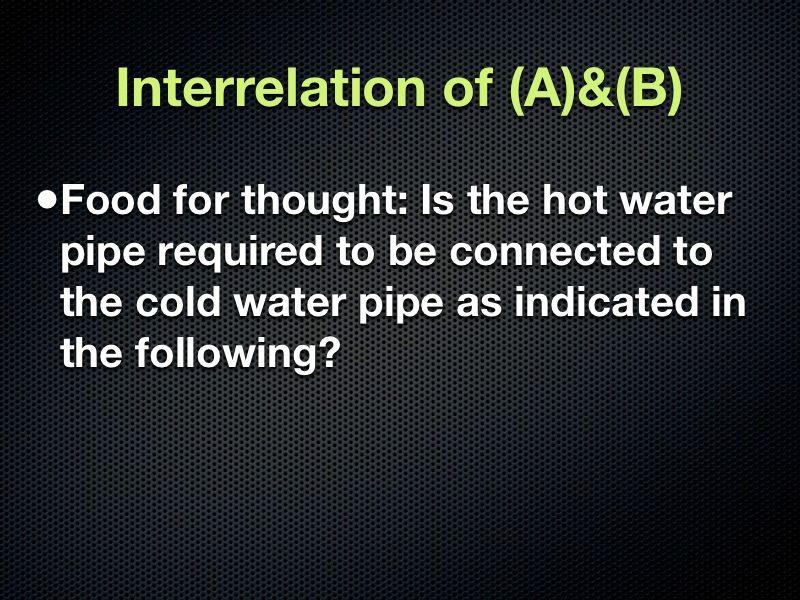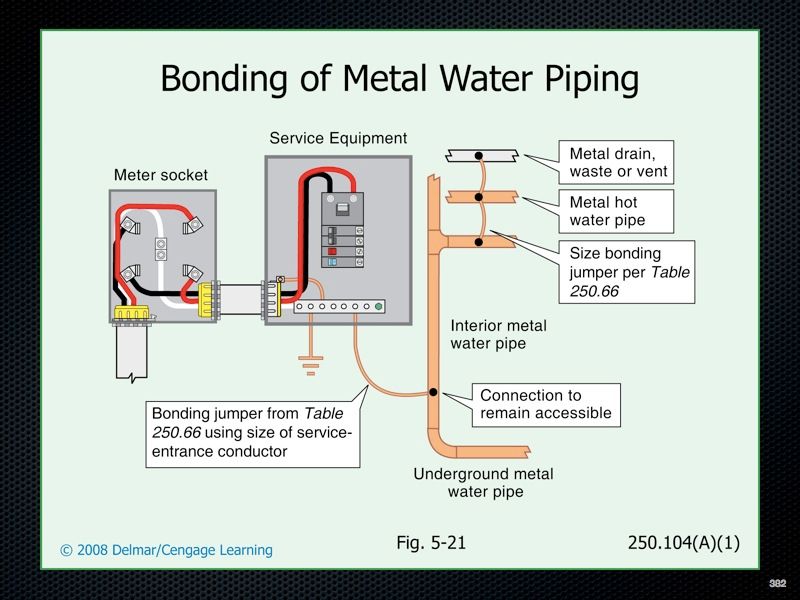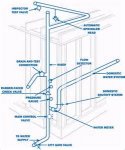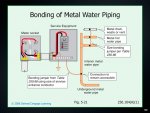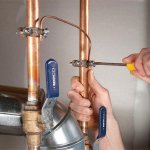Exactly why I posted the link. I do not pick and choose what fits my argument like others do.
I give examples why it is not acceptable. All I hear is "I say that it is OK".
Then give me an example where you can show (not necessarily prove) that a fixture 'bonds' two piping systems together.
Any standard would do. Not your opinion!
Because you can't.
And the link you posted writen by Mark Ode clearly accepts that the mechanical connections of most faucets and other plumbing fittings does in fact make an acceptable connection (bond) between the hot and cold water lines, does all faucets make this connection, NO but if it has a brass or conductive body that is electrically connected between the two pipes I would say it does, Mark Ode seems to think so, but we have to look for it when we are wiring or inspecting.
Below is a quote from the NECH of 250.104(A)(1)
Where it cannot be reasonably concluded that the hot
and cold water pipes are reliably bonded through mechanical
connections, an electrical bonding jumper is required to
ensure that this connection is made. Some judgment must be
exercised for each installation. Isolated sections of metal
piping (such as may be used for a plumbing fixture connection)
that are connected to an overall nonmetallic water piping
system are not subject to the requirements of
250.104(A). The isolated sections are not a metal water piping
system. The special installation requirements provided
in 250.64(A), (B), and (E) also apply to the water piping
bonding jumper.
This is also from a very high up NFPA person Mark W. Earley, P.E., i s Chief Electrical Engineer at NFPA.
Again he clearly emphasizes that if we can reasonably concluded that the hot
and cold water pipes are reliably bonded through mechanical
connection, then no other bond is needed.
And goes on to say
Some judgment must be exercised for each installation
This judgment is for us to determine if the jumper is needed, if there is a electro/mechanical
connection then it is clear that the jumper is not needed.
Sure we can be lazy and just say all electro/mechanical connections are not good enough but in reality we know this is not true.
I have seen some of these electro/mechanical connections handle hundreds of amps from a welder being used to thaw out frozen pipes without failing, so your not going to convince me that they are not good enough.
I'm so glad the State of Indiana does not require this jumper as long as there is a electro/mechanical connection, the shower faucets in the post above would be one that would be clearly accepted, as well as many other types of hot to cold electro/mechanical connections you will find in most houses, in doing some searches I also find that many other juridictions also feel the same way as does this city in California in this PDF of their electrical requirment, see the second page #10 d, I found many others like this one:
City of La Palma, Ca
Or this one:
City of San Jose
Which here is a quote from it:
Note: Piping is commonly bonded at the water heater. The hot and cold water piping systems are effectively bonded together via plumbing mixing valves at tubs and showers, etc. Therefore, the City of San Jose accepts a single bond to the cold water piping only. Note: An independent bonding jumper to the hot water piping is not required.
